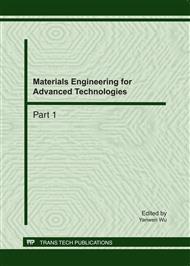p.42
p.47
p.53
p.59
p.66
p.70
p.75
p.80
p.84
Effect of Lithium Chloride and Sodium Propionate on Growth of Selected Probiotics
Abstract:
Effect of Lithium Chloride (LiCl) and Sodium Propionate (CH3CH2COONa) on growth of Lactobacillus acidophilus, Bifidobacterium bifidum, Lactobacillus bulgaricus, Lactobacillus casei and Lactobacillus rhamnosus was studied by measuring optical density at 600nm (OD600) and pH using MRS media as the control. The addition of each substance (%, w/v) was 0.025%, 0.05%, 0.1%, 0.2% and 0.3%. Results were as follows: addition of LiCl has the significant inhibition on growth of Lactobacillus acidophilus, Bifidobacterium bifidum and Lactobacillus bulgaricus at incubation 12h. The optimum selective concentration of LiCl in MRS media was 0.1% both for Lactobacillus acidophilus and Lactobacillus bulgaricus. Lactobacillus rhamnosus can tolerate the substances mentioned above. Sodium Propionate has no effect for any of five strains.
Info:
Periodical:
Pages:
66-69
Citation:
Online since:
June 2011
Authors:
Keywords:
Price:
Сopyright:
© 2011 Trans Tech Publications Ltd. All Rights Reserved
Share:
Citation:


